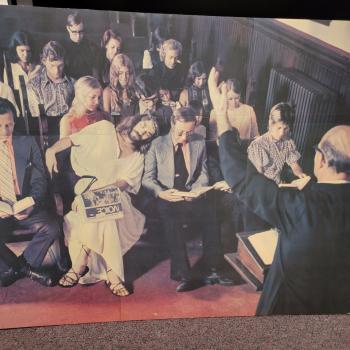 Down the road and indeed across the road that heads to the Iranian border is a little site about 30 or so miles from the actual Mt. Ararat. The sign you see to the right attests to the Turkish name of the site.
Down the road and indeed across the road that heads to the Iranian border is a little site about 30 or so miles from the actual Mt. Ararat. The sign you see to the right attests to the Turkish name of the site.
Now this site became somewhat famous in the 1980s due to the claim of one American named Wyatt that the imprint of the bottom of the ark had been found at this locale. And so much work was done, some interesting fossils were found, a little ark museum was set up, and a local resident of the village of Mahser next to the hill became ‘the guardian of the ark’ as he called himself proudly when I met him.
 Hasan is basically the caretaker of the little ark observatory and these days it looks very seedy and run down, with the paint peeling on the external walls, a shrine to a bygone day. In the observatory there are photos of Hasan and the Americans who went adventuring here, and a few objects to see as well. The latest posted article is from 1987 from the Knoxville newspaper. Most are from before then. Here are some samples of what is in the museum.
Hasan is basically the caretaker of the little ark observatory and these days it looks very seedy and run down, with the paint peeling on the external walls, a shrine to a bygone day. In the observatory there are photos of Hasan and the Americans who went adventuring here, and a few objects to see as well. The latest posted article is from 1987 from the Knoxville newspaper. Most are from before then. Here are some samples of what is in the museum.
There are some petrified rocks in the museum, which is ancient wood, and there are some fossils found in the area as well. 



Below you will see my own shot of the depressed area claimed to have been the spot where Noah’s boat landed. Measurements of the site were taken and said to correspond to the Biblical record, but sadly we are really not sure how big a cubit was. One guess is that it was from the tip of the middle finger to the elbow of a normal man’s arm. Maybe two feet at most, probably less if an ancient man’s arm is the issue. We are not sure.
Let me just say that while I am not opposed to this being the spot that Noah’s ark landed, in fact Mr. Wyatt and others had to come up with a theory of a lava float which carried the boat down the hill to get to this low an elevation. This hill is a nice hill but it’s no Ararat, and the evidence for it being Ararat frankly doesn’t hold much water, to coin a phrase.
And here is the problem with the entire enterprise— it was undertaken by enthusiastic Christian lay persons with much more zeal than knowledge. Not by professional archaeologists, unlike at Gobeckli Tepe Temple, but by those prone to leap to conclusions based on evidence that can be interpreted in various other ways.
What the story of Hasan and his friends should teach us is that in a real historical study, caution, care, and painstaking labor over many years is normally required before one could come to reasonable secure conclusions.
Take for example Gobeckli— Klaus Schmidt has been at this for 17 solid years, and less than 10% of the site has been excavated! Scientific archaeological work is not all about just suddenly discovering something lying on or just under the ground, and interpreting it. It requires hard and cautious work.
Evangelical Christians should learn that the motto ‘believe first and then ask questions later’ is not any better than the motto ‘shoot first and ask questions later’ when it comes to correlating empirical and archaeological data with the Bible.
I believe such historical and archaeological study should be done, but especially in an skeptical age it should be done by full time careful trained professionals who know what they are doing, know how to dig and interpret the evidence, and are willing to continue to correct their theories if the evidence in the end goes in other directions.
The museum Hasan is a caretaker of is a testimony to how not to do archaeological work, and in the end it doesn’t speak highly of conservative Christian attempts to support the historical accuracy of the Bible.
















